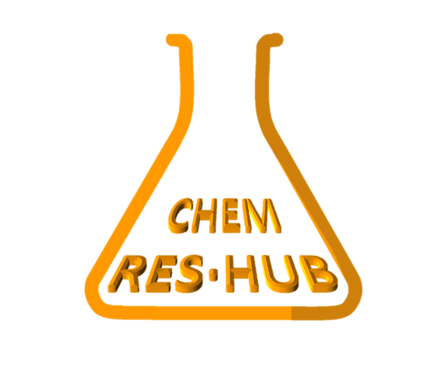How to Leverage LinkedIn for Your Research Journey
TUTORIALCHEMISTRYBLOG


When people think of LinkedIn, they usually associate it with job hunting. However, LinkedIn is a powerful tool for researchers to connect with experts, showcase their work, and even find funding opportunities.
How to Leverage LinkedIn for Your Research Journey: Pro Tips for Researchers
Introduction
When people think of LinkedIn, they usually associate it with job hunting. However, LinkedIn is a powerful tool for researchers to connect with experts, showcase their work, and even find funding opportunities.
By using LinkedIn strategically, researchers can:
✅ Expand their professional network
✅ Collaborate with experts in their field
✅ Gain recognition for their work
✅ Find funding and research opportunities
This guide will show you proven strategies to optimize your LinkedIn profile, connect with researchers, and build an impactful academic presence.
1. Optimize Your LinkedIn Profile for Research Visibility
Your LinkedIn profile is your academic identity in the professional world. A well-optimized profile attracts potential collaborators and increases your credibility.
A. Craft a Compelling Headline
Your headline should clearly define your research expertise.
✅ Examples of Strong Headlines for Researchers:
✔ "Ph.D. Candidate | Organic Chemistry | Metal-Organic Frameworks & Drug Delivery"
✔ "Postdoctoral Researcher | AI & Computational Chemistry | Data-Driven Materials Discovery"
✔ "Assistant Professor | Spectroscopy & Material Science | Author | Science Communicator"
🚫 Avoid generic headlines like: "Ph.D. Student at XYZ University" (It doesn’t highlight your expertise).
B. Write an Engaging About Section
Use this section to introduce yourself, your research interests, and your key achievements.
✅ Example:
"I am a graduate researcher specializing in Metal-Organic Frameworks (MOFs) for targeted drug delivery. My research focuses on optimizing adsorption mechanisms for ibuprofen and other pharmaceuticals. Passionate about materials chemistry, I actively collaborate with interdisciplinary teams to develop innovative drug release systems. Open to research collaborations and industry partnerships in pharmaceutical applications of MOFs."
🚀 Pro Tip: Use keywords related to your field (e.g., MOFs, drug delivery, spectroscopy, materials science) so that your profile appears in relevant searches.
C. Add Research Experience & Achievements
Under "Experience," detail your research roles:
✅ Your university and department
✅ Project title & key findings
✅ Published papers or conference presentations
Include links to:
🔗 Your Google Scholar profile
🔗 ResearchGate profile
🔗 Institutional webpage or lab website
D. Highlight Your Publications
Use the "Featured" section to showcase:
📄 Your latest research paper (with DOI link)
📽 Conference presentations
🎥 Research-related videos or posters
2. Build a Strong Network with Researchers and Industry Experts
Your LinkedIn network should go beyond classmates and professors—you should connect with leading researchers, industry professionals, and funding organizations.
A. Who to Connect With?
🔹 Experts in your research field (professors, postdocs, PhDs)
🔹 Researchers from top universities and institutes
🔹 Professionals from R&D departments in industry
🔹 Editors of scientific journals (for publishing insights)
🔹 Funding agencies and grant reviewers
✅ How to Find the Right People?
Use LinkedIn Search: Type keywords like "MOFs researcher", "Materials Chemistry Postdoc", or "Spectroscopy Expert."
Join LinkedIn Groups (e.g., Materials Science Network, Chemistry Research Forum).
Look at “People Also Viewed” on researcher profiles.
🚀 Pro Tip: Send personalized connection requests!
✅ Example Message:
"Hi Dr. [Name], I admire your work on [specific topic]. I’m currently researching [your topic] and would love to connect and learn from your insights!"
3. Use LinkedIn for Research Collaboration & Funding
Many researchers don’t realize that LinkedIn can help them find research collaborations and funding opportunities.
A. Find Collaborators for Your Research
1️⃣ Post about your research:
✅ Share updates on your experiments, publications, or conference presentations.
✅ End with a call-to-action (CTA): “Looking for collaborators on MOF-based drug delivery. Let’s connect!”
2️⃣ Comment on others’ research:
✅ Engage with researchers who work on similar topics.
✅ Share insights or ask questions to build meaningful conversations.
🚀 Pro Tip: Engage in LinkedIn Polls or discussions to identify trending research areas.
B. Discover Research Grants and Fellowships
1️⃣ Follow Funding Organizations
🔹 National Science Foundation (NSF)
🔹 European Research Council (ERC)
🔹 Department of Science & Technology (DST)
🔹 Gates Foundation
2️⃣ Join Groups for Funding Opportunities
✅ "PhD & Postdoc Funding Opportunities"
✅ "Research Grants & Fellowships Network"
3️⃣ Search for Grants in LinkedIn Jobs
Type “Research Grant”, “Postdoctoral Fellowship”, or “PhD Funding” in LinkedIn Jobs.
Many universities and funding bodies post scholarships and grants directly on LinkedIn.
🚀 Pro Tip: Set job alerts for research funding opportunities!
4. Engage with the Research Community
To gain visibility, actively engage with researchers on LinkedIn.
A. Post Research Updates & Insights
✅ Share short summaries of your research papers (with open-access links).
✅ Post about conferences, workshops, or lab experiences.
✅ Share scientific breakthroughs in your field and your opinion on them.
🚀 Pro Tip: Use hashtags like #Science, #Research, #DrugDelivery, #Spectroscopy to increase reach.
B. Write LinkedIn Articles on Your Research
💡 Break down complex topics in a simplified, engaging way.
✅ Example Topics:
✔ "How MOFs Are Revolutionizing Drug Delivery"
✔ "Spectroscopy Techniques Every Chemist Should Know"
✔ "My Ph.D. Journey: Lessons from Materials Chemistry Research"
🚀 Pro Tip: Tag experts in your posts to start discussions!
5. Use LinkedIn to Stay Updated with Research Trends
Stay ahead of the curve by following:
✅ Top Researchers in Your Field
✅ Scientific Journals (Nature, Science, ACS, RSC)
✅ University Pages (MIT, Harvard, Cambridge, etc.)
✅ Industry Leaders (Pharmaceutical and Materials Science Companies)
Final Thoughts
LinkedIn is more than just a job-hunting platform—it’s a goldmine for researchers if used strategically. By optimizing your profile, networking with experts, engaging with research communities, and finding collaboration opportunities, you can make LinkedIn an essential part of your research journey.
📢 How do you use LinkedIn for your research career? Share your thoughts in the comments!
Happy Researching!!
